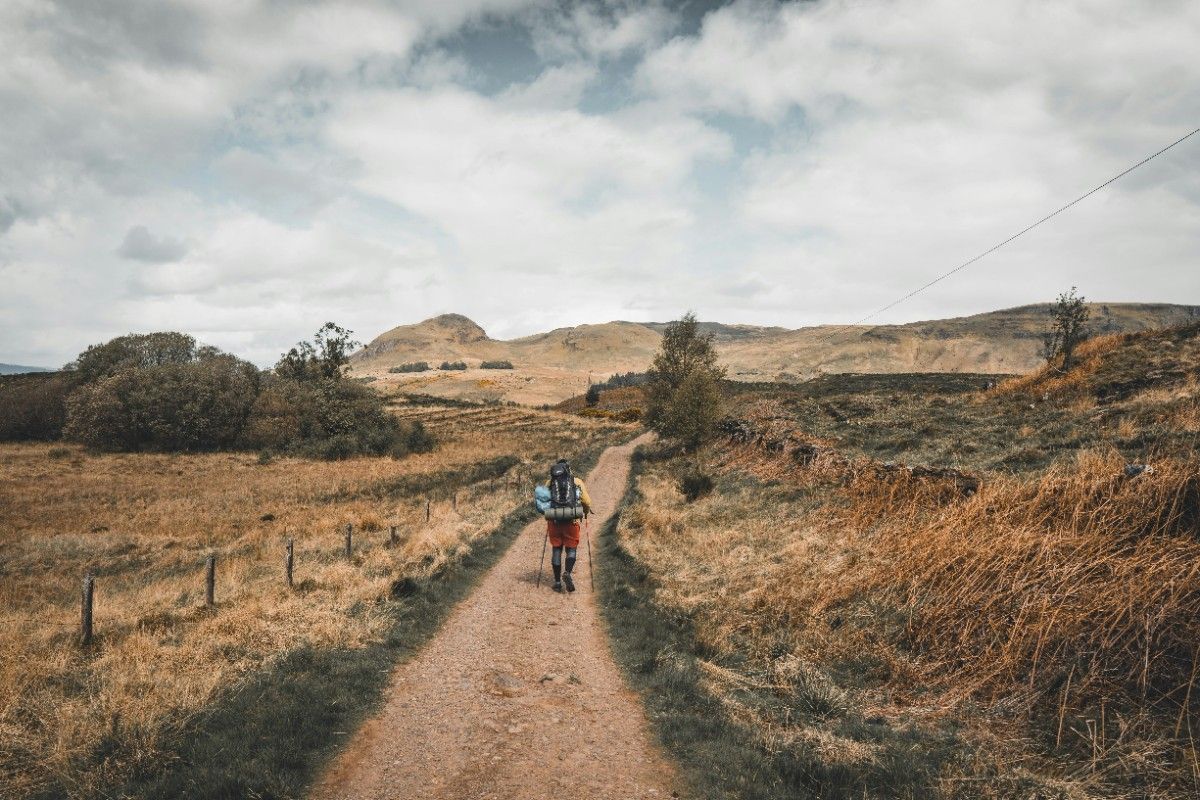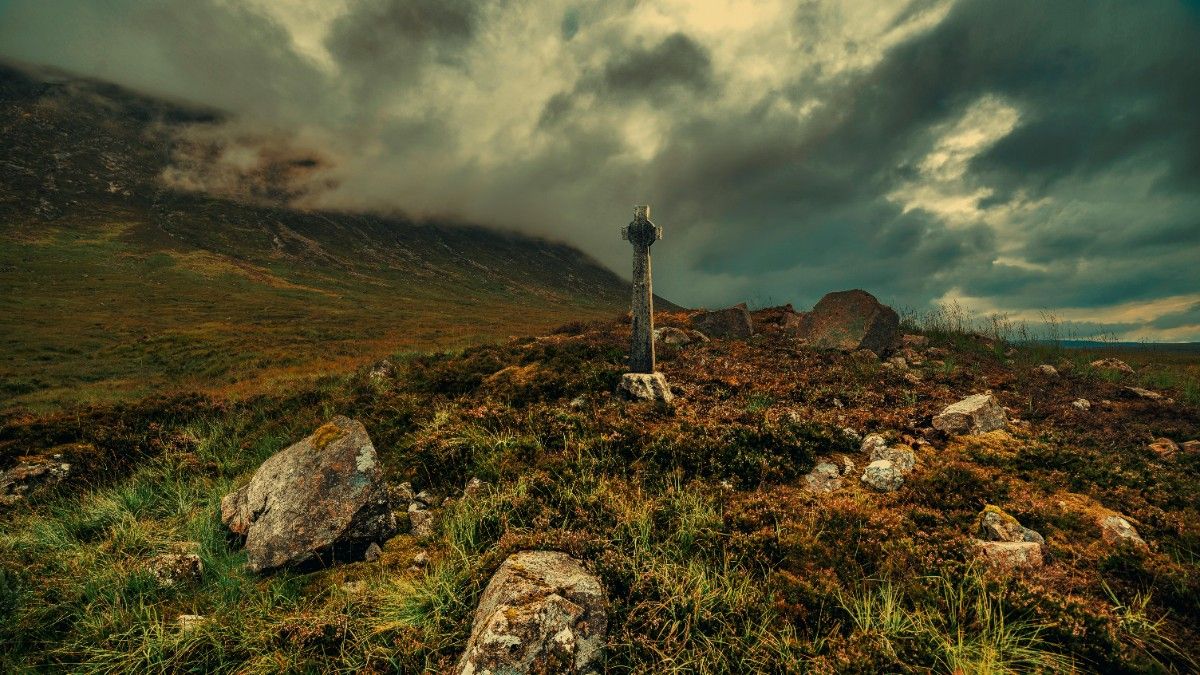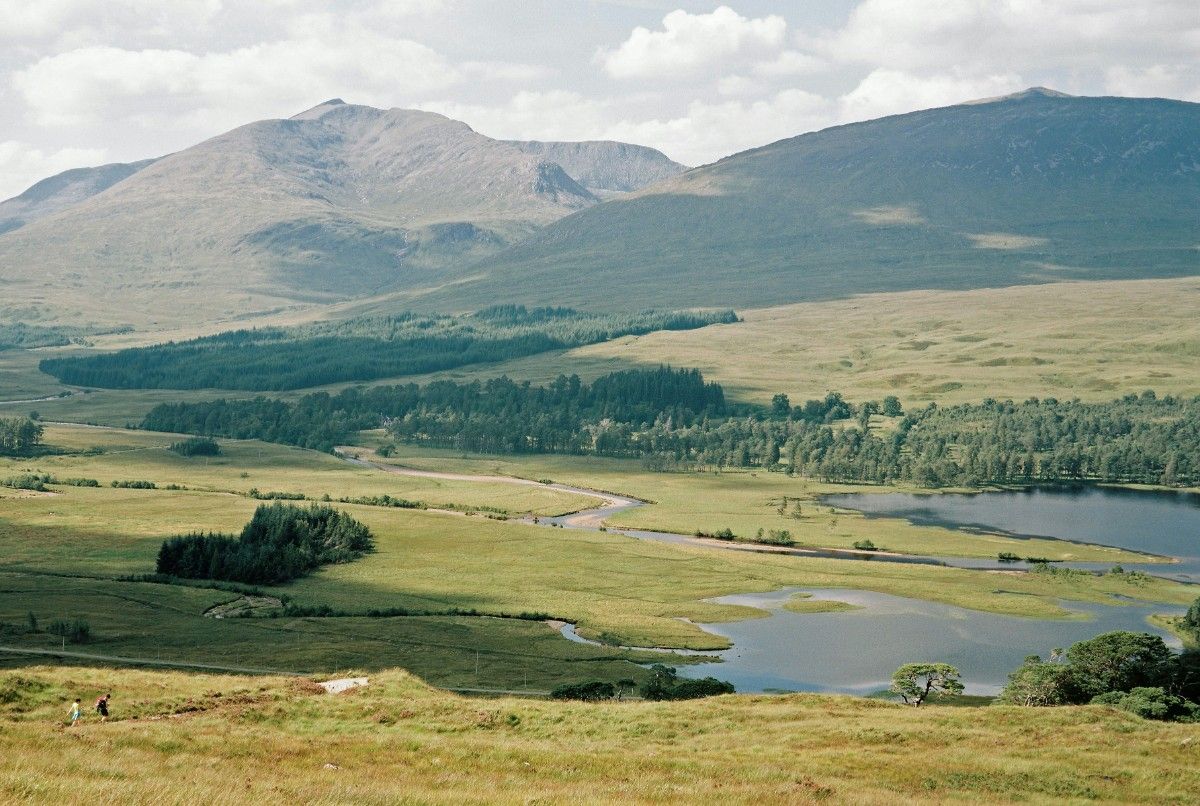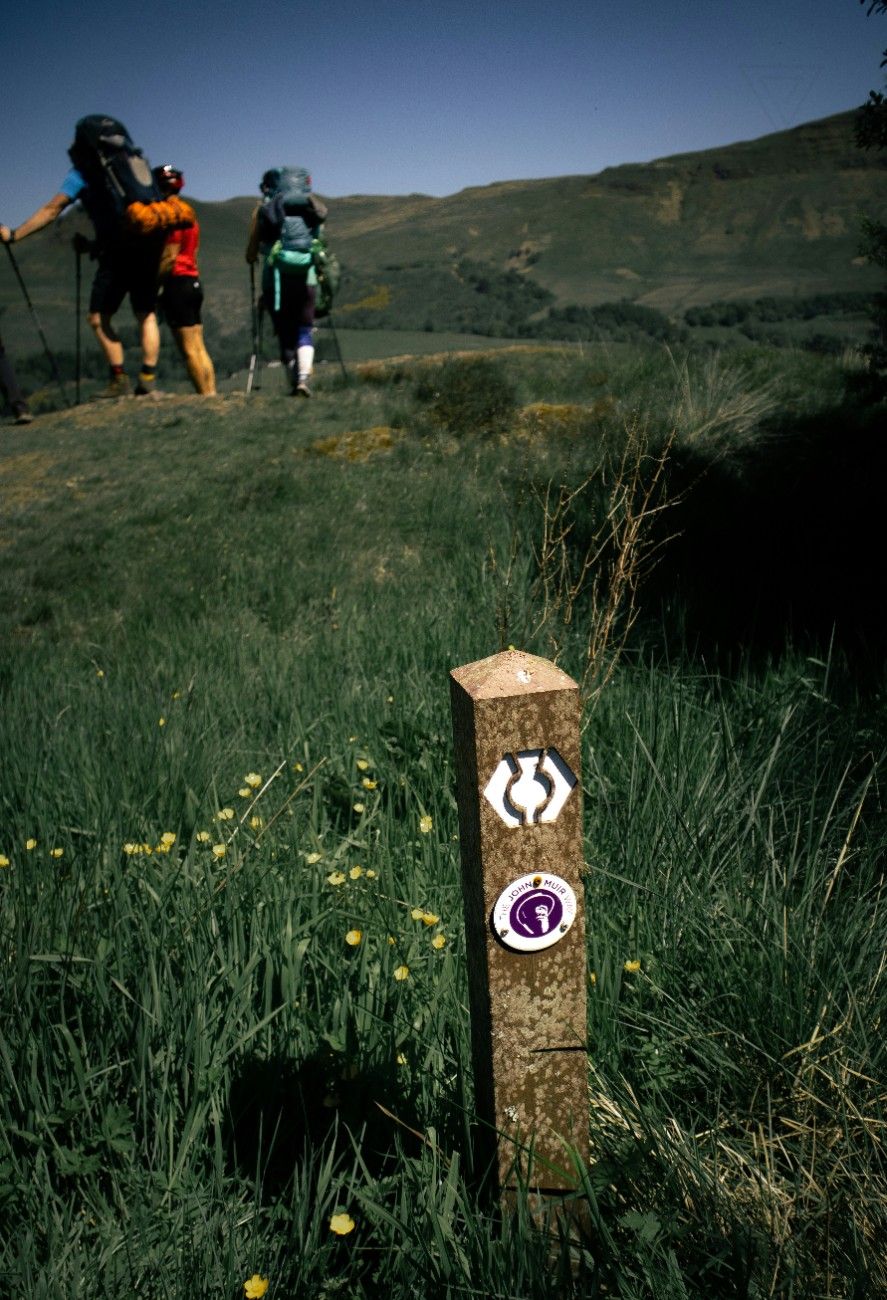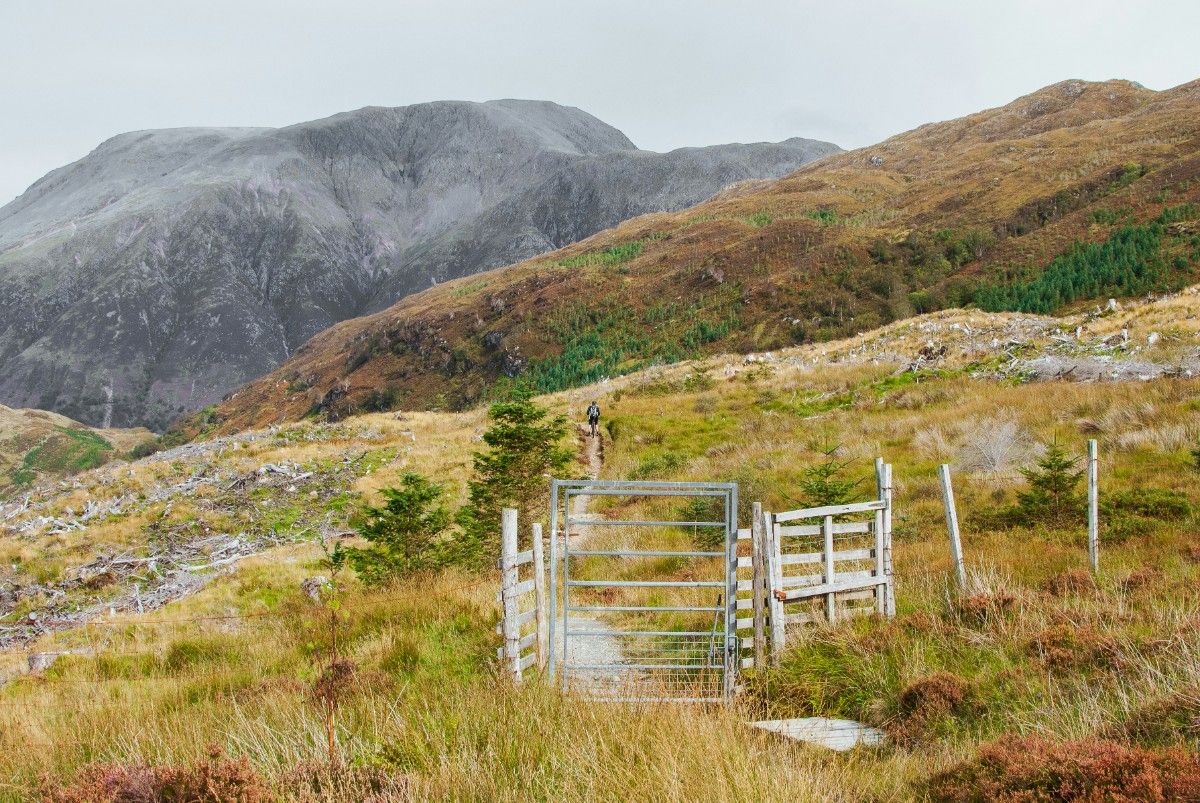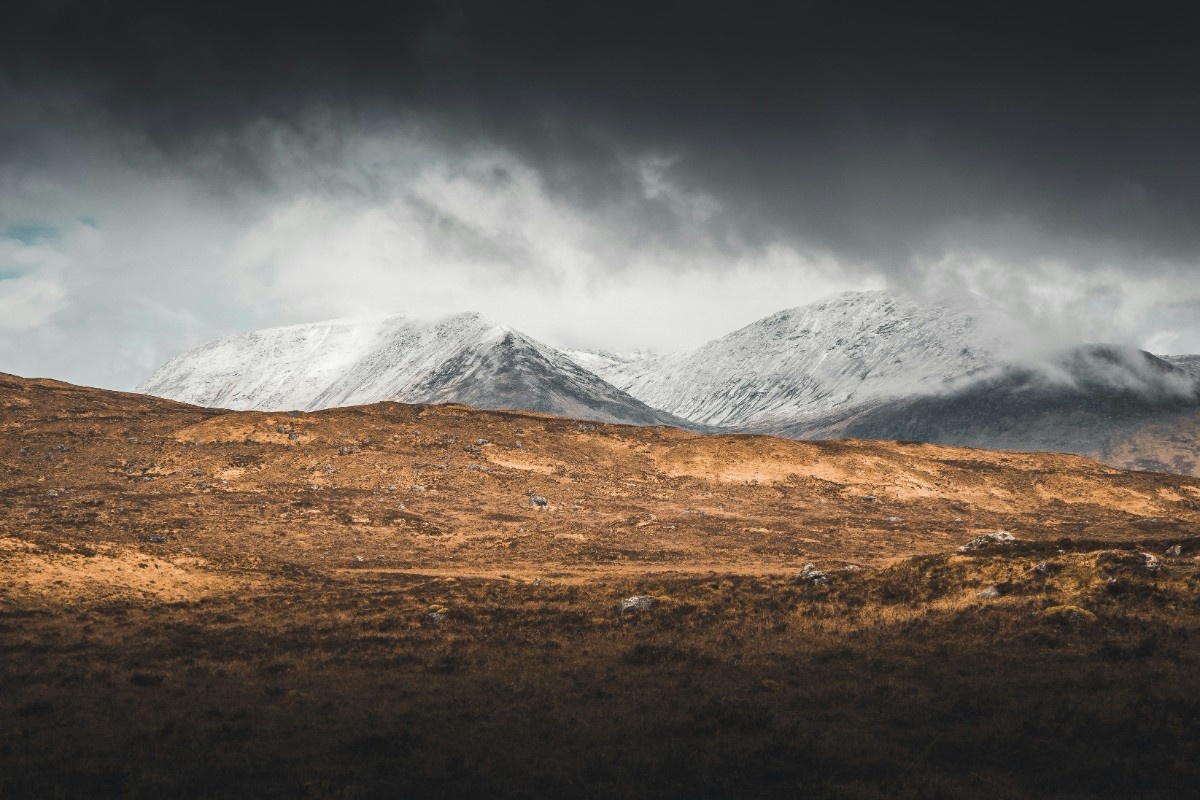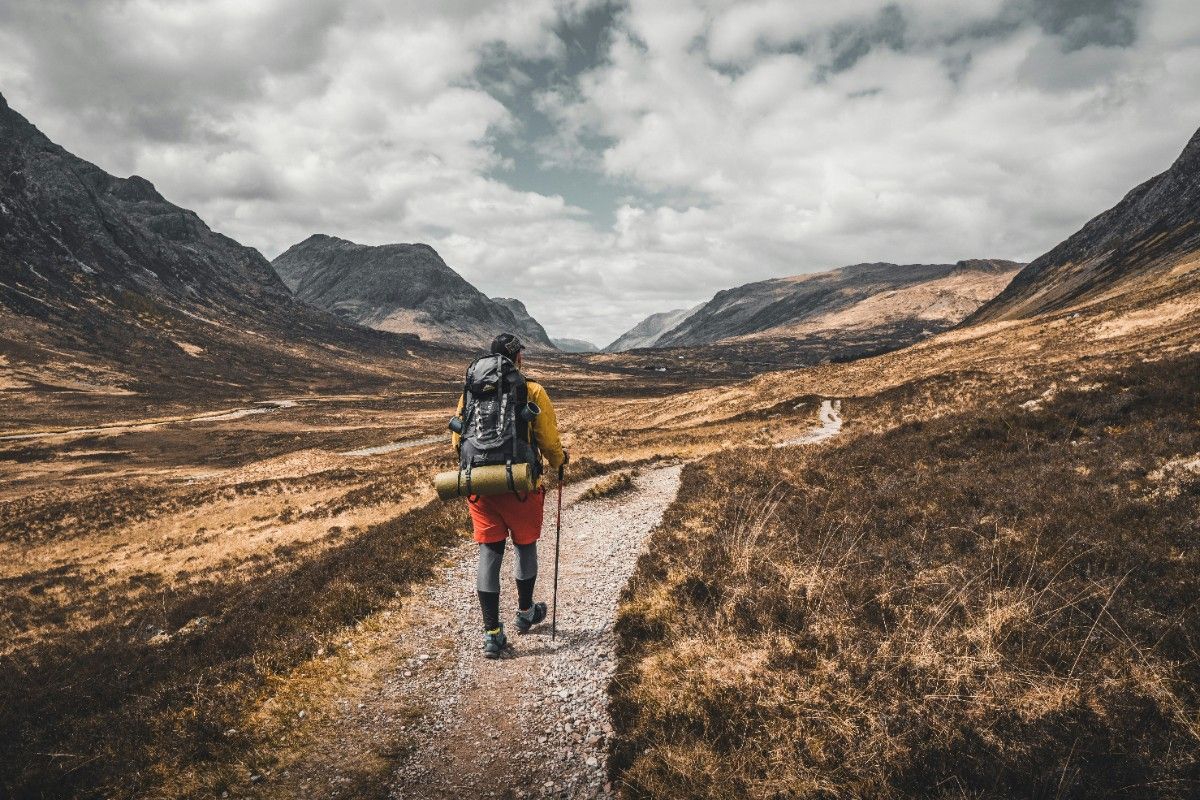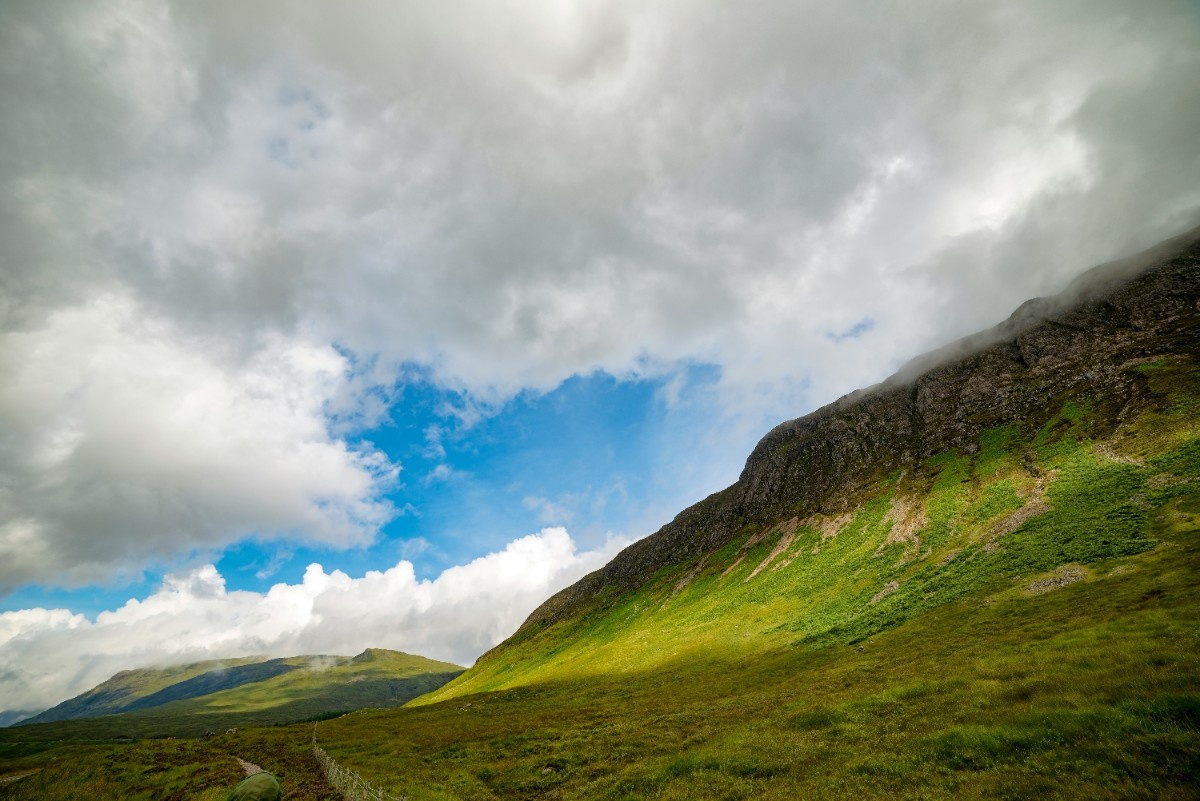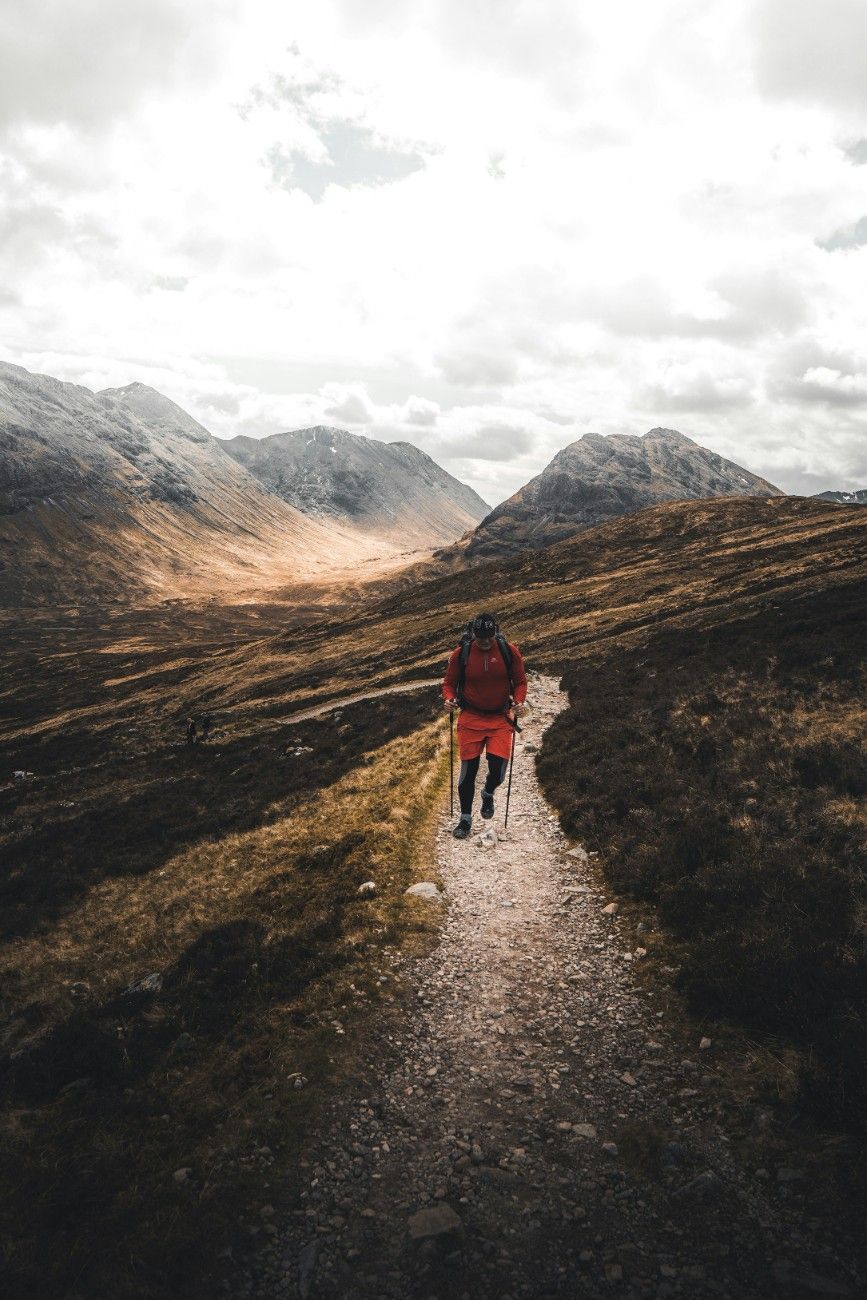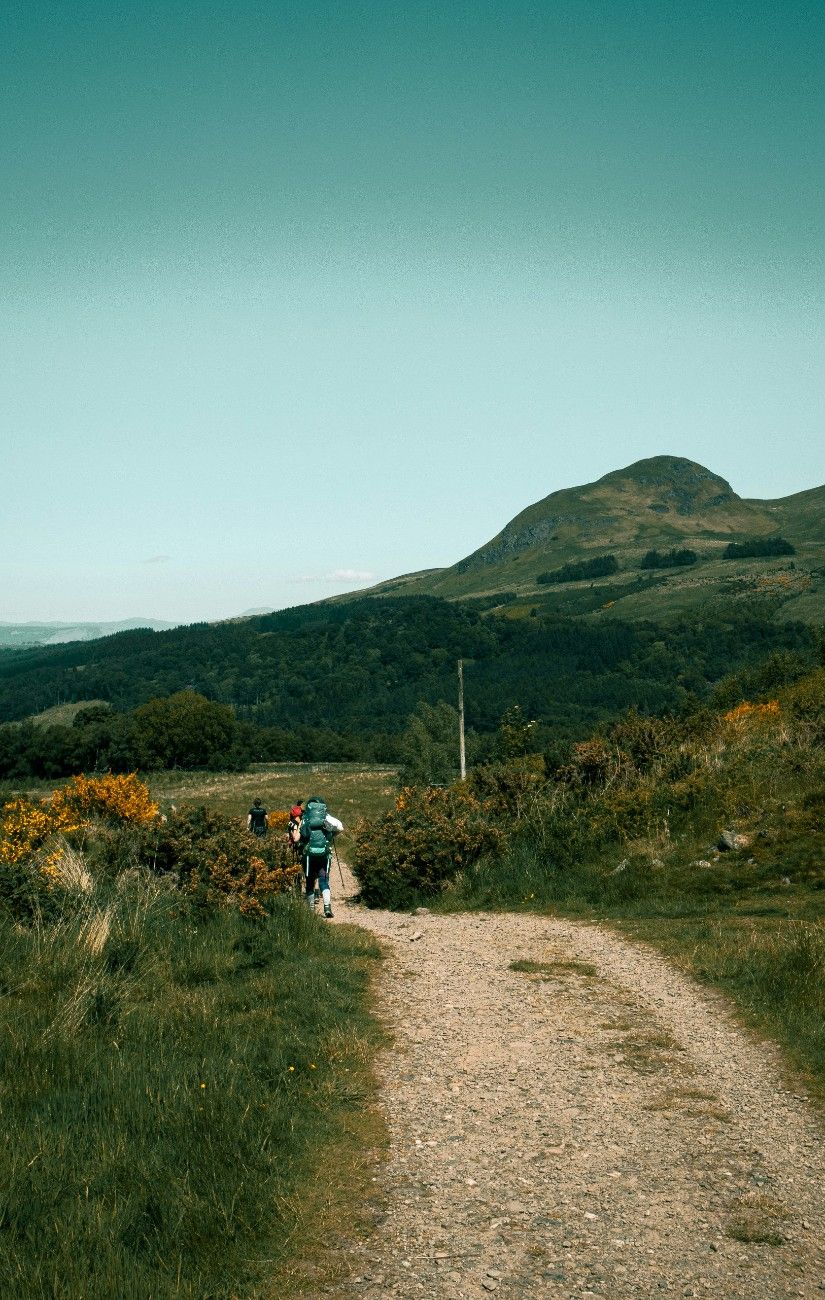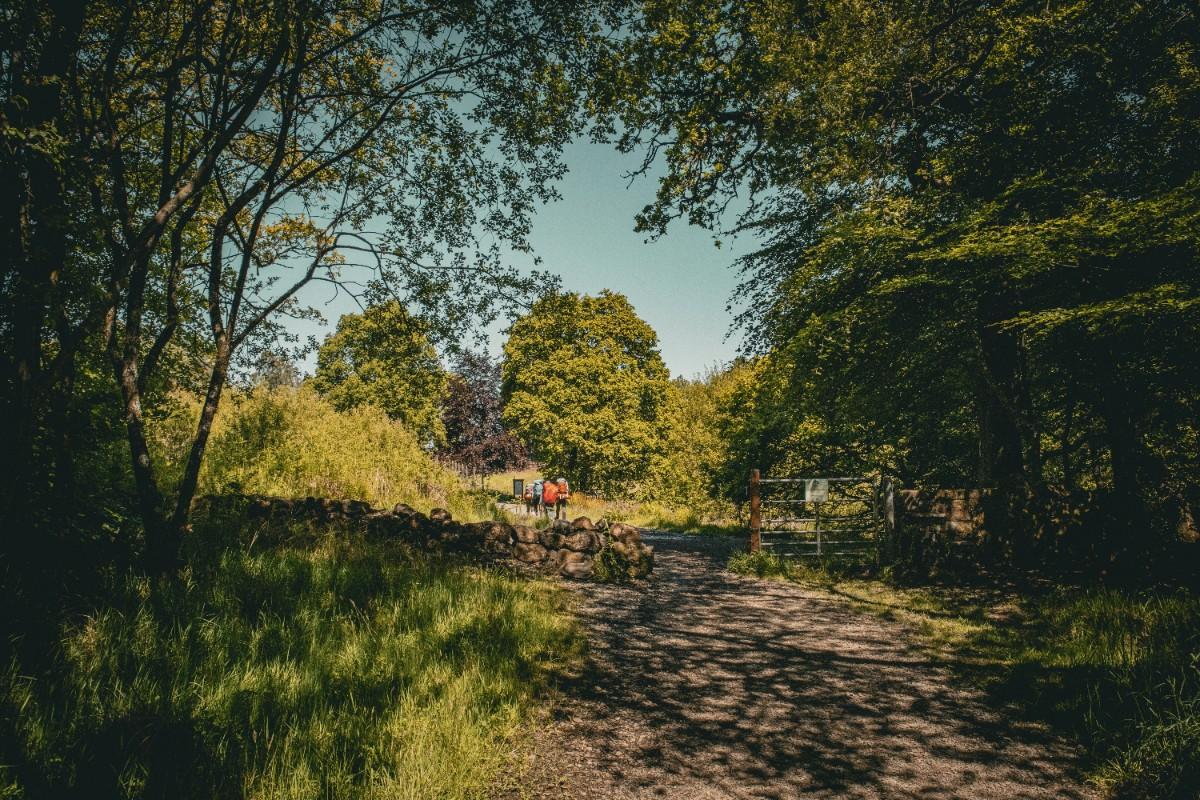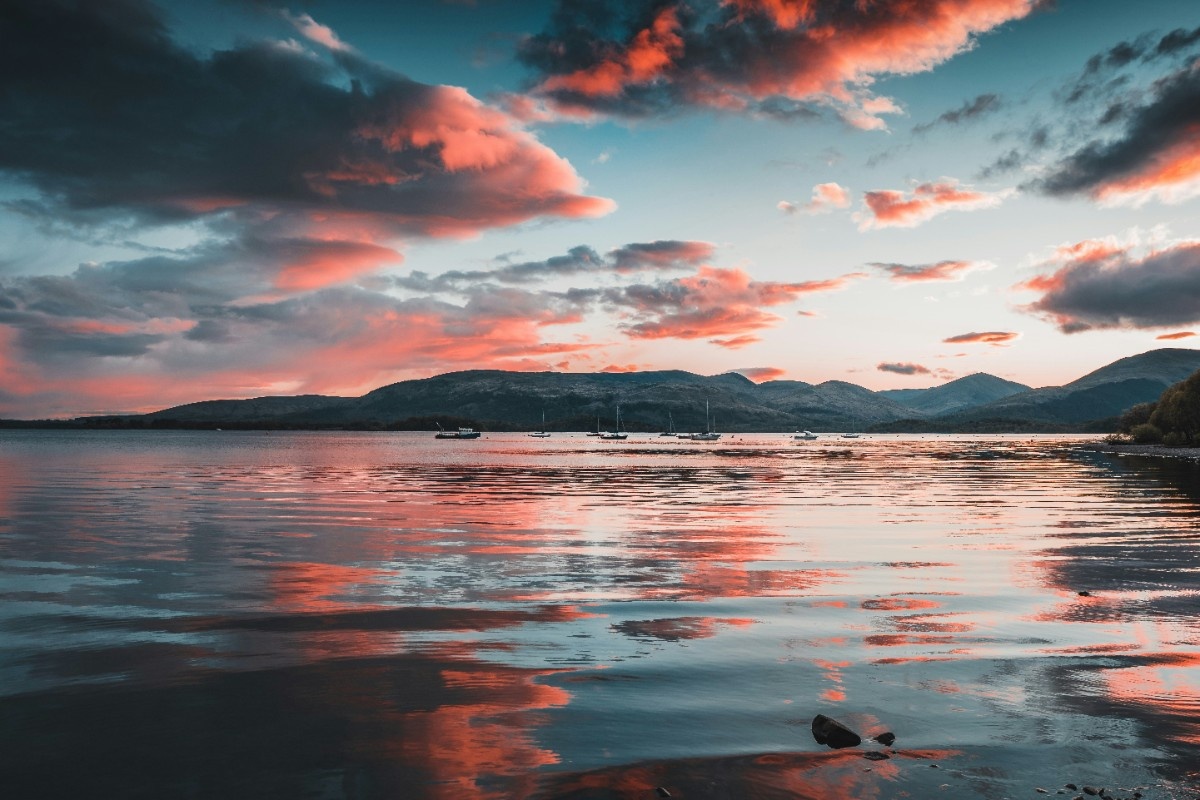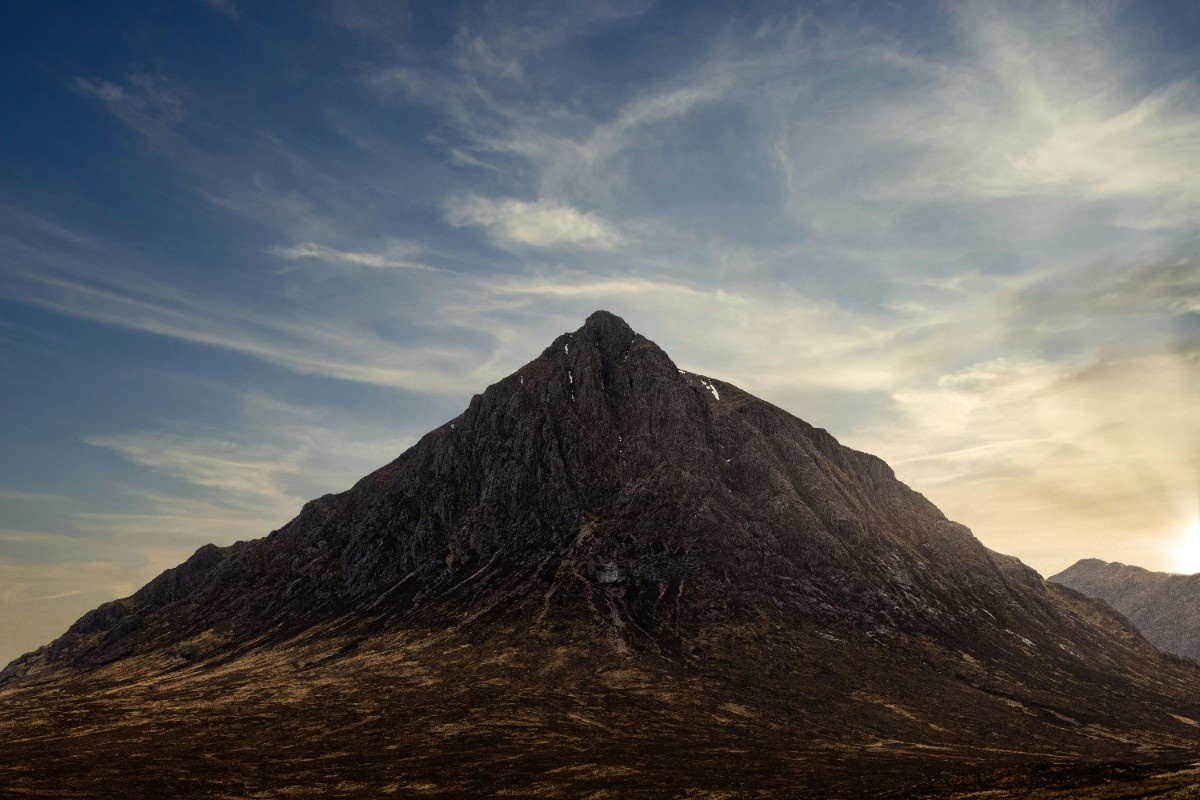Discovering the West Highland Way
Introduction to the West Highland Way
The West Highland Way is a long-distance hiking trail in Scotland that stretches for 96 miles (154 km) from Milngavie, just north of Glasgow, to Fort William in the Scottish Highlands. Established in 1980, it was Scotland's first officially designated long-distance footpath and has since become one of the most popular hiking trails in the United Kingdom. The West Highland Way route takes walkers through a diverse range of landscapes, from the gentle rolling hills of the Lowlands to the rugged, mountainous terrain of the Highlands, passing by iconic locations such as Loch Lomond and Glencoe.
The appeal of the West Highland Way lies not only in its stunning scenery but also in its accessibility and excellent infrastructure. The trail is well-marked and maintained, with a dedicated path that is easy to follow. Accommodation options are plentiful, ranging from campsites and bothies to hotels and bed and breakfasts, catering to all preferences and budgets. Many hikers choose to camp along the route, immersing themselves in the wilderness and enjoying the tranquillity of the great outdoors. The West Highland Way is not just a physical journey but also a cultural and historical one, passing through many small villages and towns, each with its own rich heritage and warm, welcoming inhabitants.
Reasons to Hike the West Highland Way
There are countless reasons why the West Highland Way attracts hikers from all over the world. Firstly, the trail offers a true wilderness experience, allowing walkers to immerse themselves in the stunning natural beauty of the Scottish Highlands. From the tranquil shores of Loch Lomond to the dramatic peaks of Glencoe, the West Highland Way showcases the very best of Scotland's landscapes. The sense of achievement upon completing the 96-mile journey is unparalleled, with hikers experiencing a profound connection to the land and a deep appreciation for the challenges they have overcome.
Moreover, the West Highland Way is a journey through history, following ancient drove roads, military roads, and old coaching routes that have been used for centuries. The trail passes by numerous historical sites, such as the ruins of old crofts and the remains of Roman forts, offering a glimpse into Scotland's rich past. Hikers can also experience the vibrant culture of the Highlands, with opportunities to sample traditional Scottish cuisine, listen to live music in local pubs, and engage with the friendly and welcoming communities along the way.
Finally, hiking the West Highland Way is an excellent way to challenge oneself physically and mentally. The trail is not an easy undertaking, with some sections involving steep ascents and descents, and the unpredictable Scottish weather can add an extra layer of difficulty. However, the sense of accomplishment and personal growth that comes with completing the West Highland Way is truly transformative, leaving hikers with lasting memories and a newfound confidence in their abilities.
Landscape and Nature
One of the primary draws of the West Highland Way is the incredible diversity of landscapes and natural wonders that hikers encounter along the route. The trail begins in the rolling hills of the Lowlands, passing through lush forests and alongside tranquil lochs. As hikers progress northward, the terrain becomes increasingly rugged and mountainous, with the path ascending into the wild and remote Highlands.
The West Highland Way is renowned for its stunning lochs, with Loch Lomond being a particular highlight. The largest freshwater loch in Great Britain, Loch Lomond is a true gem of the West Highland Way route, offering breathtaking views and a sense of tranquillity that is hard to find elsewhere. The trail follows the eastern shore of the loch for several miles, allowing hikers to fully appreciate its beauty and serenity.
As the West Highland Way continues into the Highlands, the landscape becomes more dramatic and awe-inspiring. The trail passes through Glencoe, a valley of towering peaks and deep glacial valleys that is steeped in history and legend. The rugged beauty of Glencoe is a testament to the raw power of nature, with its steep, craggy mountainsides and tumbling waterfalls creating a sense of wonder and humility in all who pass through.
The West Highland Way is also home to an incredible variety of flora and fauna, with the changing landscapes supporting a wide range of ecosystems. From the lush oak and birch forests of the Lowlands to the heather-clad moorlands of Rannoch Moor, the trail is a haven for plant and animal life. Hikers may spot red deer grazing on the hillsides, hear the haunting cry of the golden eagle soaring overhead, or catch a glimpse of the elusive Scottish wildcat stalking through the undergrowth.
In addition to its natural wonders, the West Highland Way also offers opportunities for stargazing and appreciating the night sky. The remote and unpolluted nature of the Highlands means that the stars are incredibly vivid and clear, with the Milky Way stretching across the heavens in a breathtaking display. Many hikers choose to camp along the route, falling asleep under a canopy of stars and waking up to the gentle sounds of the wilderness.
Planning Your West Highland Way Adventure
Choosing Your Itinerary
One of the first steps in planning your West Highland Way adventure is to decide on your itinerary. Most hikers complete the 96-mile route in 6-8 days, averaging around 12-16 miles per day. However, the exact duration of your hike will depend on your fitness level, hiking experience, and personal preferences.
If you are a seasoned hiker with a good level of fitness, you may choose to complete the trail in 5-6 days, pushing yourself to cover more ground each day. This can be a rewarding challenge, but it is important to listen to your body and not overexert yourself, as the terrain can be tough and unforgiving.
For those who prefer a more leisurely pace, extending the hike to 7-8 days allows for shorter daily distances and more time to appreciate the scenery and explore the villages and towns along the way. This can be a good option for novice hikers or those who want to fully immerse themselves in the experience.
When planning your itinerary, it is important to consider the location of accommodation and services along the route. The West Highland Way passes through several villages and towns, such as Drymen, Tyndrum, and Kinlochleven, which offer a range of accommodation options and amenities. However, there are also long stretches of remote wilderness where services are limited, so it is important to plan ahead and ensure you have sufficient supplies.
Booking Accommodation
One of the most important aspects of planning your West Highland Way adventure is booking your accommodation in advance. The trail can be busy, especially during peak season (May-September), and accommodation options can fill up quickly.
There are several types of accommodation available along the West Highland Way, ranging from basic campsites to luxurious hotels. Wild camping is permitted along most of the route, allowing hikers to pitch their tents in scenic locations and enjoy a true wilderness experience. However, it is important to familiarise yourself with the Scottish Outdoor Access Code and practice "leave no trace" principles to minimise your impact on the environment.
For those who prefer a roof over their heads, there are numerous campsites, hostels, bunkhouses, and bed and breakfasts along the route. These can vary in terms of facilities and comfort levels, but all offer a warm and dry place to rest after a long day on the trail. Some popular options include the West Highland Way Sleeper in Rowardennan, the Glencoe Youth Hostel, and the Kingshouse Hotel in Glencoe.
If you prefer a more luxurious experience, there are also several hotels and guesthouses along the West Highland Way that offer comfortable rooms, delicious meals, and other amenities. These can be a good option for those who want to treat themselves after a challenging day on the trail or celebrate completing the route in style.
When booking your accommodation, it is important to consider the location and distance between each stop. Some sections of the West Highland Way are longer or more challenging than others, so it is important to plan your overnight stops accordingly. Many hikers choose to use a baggage transfer service, which transports their luggage between accommodations each day, allowing them to hike with just a day pack.
Essential Gear and Equipment
Hiking the West Highland Way requires careful preparation and the right gear and equipment. The weather in Scotland can be unpredictable, with rain, wind, and cold temperatures possible even in the summer months. As such, it is essential to have appropriate clothing and equipment to ensure your safety and comfort on the trail.
Some essential items to pack for the West Highland Way include:
- Waterproof and breathable hiking boots with good ankle support
- Waterproof and windproof jacket and trousers
- Warm and quick-drying base layers and insulating mid-layers
- Hat, gloves, and buff for cold weather
- Sun hat, sunglasses, and sunscreen for sunny weather
- Backpack with rain cover and comfortable hip belt and shoulder straps
- Sleeping bag and sleeping mat (if camping)
- Tent or bivy bag (if camping)
- Stove and fuel (if camping and cooking your own meals)
- Water bottles or hydration system and water purification tablets or filter
- First aid kit and blister kit
- Map, compass, and GPS device (and knowledge of how to use them)
- Headtorch or torch with spare batteries
- Insect repellent and midge net (in the summer months)
In addition to these essentials, it is important to pack enough food and snacks to sustain you between resupply points, as well as any personal items such as medication, toiletries, and a camera or journal to document your journey.
When packing for the West Highland Way, it is important to strike a balance between being prepared and not overloading yourself. The weight of your backpack can have a significant impact on your enjoyment and comfort on the trail, so it is important to pack light and only bring what you need. Many hikers choose to use ultralight gear and techniques to minimise their pack weight, such as using a tarp instead of a tent or cooking simple one-pot meals.
Finally, it is important to test your gear and equipment before setting out on the West Highland Way. Make sure your hiking boots are well broken-in and comfortable, and that all of your gear is in good working condition. It can be helpful to do a few practice hikes with your full pack to get used to the weight and ensure that everything fits and functions as it should.
By carefully planning your itinerary, booking your accommodation in advance, and packing the right gear and equipment, you can ensure that your West Highland Way adventure is safe, comfortable, and enjoyable.
The Route: A Stage-by-Stage Guide
Stage 1: Milngavie to Drymen
The West Highland Way begins in the town of Milngavie, just north of Glasgow. The first stage of the route is a gentle introduction to the trail, covering a distance of 12 miles (19 km) to the village of Drymen. The path starts at the obelisk in the town centre and follows a well-defined route through the countryside, passing by the Craigallian Fire and the Carbeth Loch before entering the Mugdock Country Park.
As you leave the park, the trail enters the Campsie Fells, a range of hills that offer stunning views over the surrounding landscape. The path then descends into the village of Drymen, where you can find accommodation, shops, and restaurants. This stage of the West Highland Way is relatively easy, with a few short climbs and descents, making it a good warm-up for the more challenging stages to come.
Stage 2: Drymen to Rowardennan
The second stage of the West Highland Way is a longer and more challenging section, covering a distance of 15 miles (24 km) from Drymen to Rowardennan. The trail starts by climbing through the Garadhban Forest, a beautiful woodland area with a mix of coniferous and deciduous trees. As you emerge from the forest, you will be rewarded with stunning views over Loch Lomond, the largest freshwater loch in Great Britain.
The path then follows the eastern shore of Loch Lomond for several miles, passing by the villages of Balmaha and Rowardennan. This section of the trail can be challenging, with some steep climbs and rocky terrain, but the views over the loch and the surrounding mountains make it well worth the effort. At Rowardennan, you can find accommodation, a pub, and a small shop, making it a good place to rest and resupply before continuing on the West Highland Way.
Stage 3: Rowardennan to Inverarnan
The third stage of the West Highland Way is another challenging section, covering a distance of 14 miles (22 km) from Rowardennan to Inverarnan. The trail continues along the eastern shore of Loch Lomond, passing through the forest and over some rocky outcrops. This section of the trail is known for its stunning views over the loch and the surrounding mountains, including Ben Lomond, the most southerly of the Munros.
As you approach the northern end of Loch Lomond, the trail becomes more rugged and remote, with some steep climbs and descents. The path then leaves the loch behind and enters Glen Falloch, a beautiful valley that leads to the village of Inverarnan. Here, you can find accommodation, a pub, and a small shop, making it a good place to rest and resupply before continuing on the West Highland Way.
Stage 4: Inverarnan to Tyndrum
The fourth stage of the West Highland Way is a longer but less challenging section, covering a distance of 12 miles (19 km) from Inverarnan to Tyndrum. The trail starts by following the River Falloch, passing through a beautiful glen with stunning views of the surrounding mountains. The path then climbs up to the high point of the stage at the pass of Mam Carraigh, offering panoramic views over the surrounding landscape.
As you descend from the pass, the trail enters a more remote and wild section of the route, passing through the Auchtertyre Estate and the Strathfillan Valley. The path then follows an old military road, passing by the ruins of St Fillans Priory before arriving in the village of Tyndrum. Here, you can find accommodation, shops, restaurants, and a small visitor centre, making it a good place to rest and resupply before continuing on the West Highland Way.
Stage 5: Tyndrum to Kingshouse
The fifth stage of the West Highland Way is a challenging but rewarding section, covering a distance of 19 miles (30 km) from Tyndrum to Kingshouse. The trail starts by following an old military road, passing through the remote and beautiful Rannoch Moor. This section of the route is known for its wild and rugged landscape, with vast expanses of peat bog, heather, and rock.
As you cross the moor, you will pass by the iconic Buachaille Etive Mor, a stunning mountain that marks the entrance to Glencoe. The trail then descends into the valley, passing by the Kingshouse Hotel, a historic inn that has been welcoming travellers since the 17th century. Here, you can find accommodation, a pub, and a restaurant, making it a good place to rest and resupply before continuing on the West Highland Way.
Stage 6: Kingshouse to Kinlochleven
The sixth stage of the West Highland Way is a shorter but challenging section, covering a distance of 9 miles (14 km) from Kingshouse to Kinlochleven. The trail starts by climbing up the Devil's Staircase, a steep and rocky path that offers stunning views over Glencoe and the surrounding mountains. At the top of the pass, you will be rewarded with panoramic views over the Mamores and the Ben Nevis range.
The path then descends into the village of Kinlochleven, passing through a beautiful valley with a mix of woodland and open moorland. Kinlochleven is a former aluminium smelting town that has been transformed into a popular outdoor recreation centre, with a range of accommodation options, shops, and restaurants. Here, you can rest and resupply before continuing on the final stage of the West Highland Way.
Stage 7: Kinlochleven to Fort William
The final stage of the West Highland Way is a challenging but rewarding section, covering a distance of 15 miles (24 km) from Kinlochleven to Fort William. The trail starts by climbing out of the village, passing through a beautiful woodland area before emerging onto open moorland. The path then follows an old military road, passing by the ruins of a former garrison before climbing up to the high point of the stage at the pass of Lairigmor.
From the pass, the trail descends into Glen Nevis, offering stunning views of Ben Nevis, the highest mountain in the British Isles. The path then follows the glen, passing through a beautiful woodland area before arriving in the town of Fort William. Here, you can find a range of accommodation options, shops, restaurants, and visitor attractions, making it a good place to celebrate the completion of the West Highland Way.
Highlights of the West Highland Way
Loch Lomond
Loch Lomond is one of the most iconic landmarks on the West Highland Way and is a highlight for many hikers. The largest freshwater loch in Great Britain, Loch Lomond is known for its stunning scenery, with a mix of wooded islands, sandy beaches, and mountain views. The West Highland Way follows the eastern shore of the loch for several miles, offering a range of viewpoints and opportunities to explore the surrounding landscape.
One of the best ways to experience Loch Lomond is to take a boat trip on the loch, which offers a different perspective on the landscape and a chance to see some of the islands up close. There are also several beaches and picnic spots along the shore, making it a great place to take a break and enjoy the scenery.
Rannoch Moor
Rannoch Moor is a vast expanse of peat bog, heather, and rock that covers an area of over 50 square miles. The moor is one of the most remote and wild sections of the West Highland Way, offering a true sense of isolation and a chance to experience the rugged beauty of the Scottish Highlands.
The West Highland Way crosses Rannoch Moor on a well-defined path that follows an old military road, passing by several small lochs and streams. The landscape is truly breathtaking, with vast expanses of open moorland stretching out in every direction, broken only by the occasional rocky outcrop or patch of woodland.
One of the best ways to experience Rannoch Moor is to take a break at one of the many viewpoints along the way, which offer stunning panoramas over the surrounding landscape. The moor is also home to a wide range of wildlife, including red deer, golden eagles, and wild goats, making it a great place for nature lovers.
Glencoe
Glencoe is one of the most famous and dramatic landscapes in Scotland, known for its towering mountains, deep valleys, and tumbling waterfalls. The West Highland Way passes through the heart of Glencoe, offering a range of stunning views and opportunities to explore the surrounding landscape.
One of the highlights of Glencoe is the Three Sisters, a trio of peaks that dominate the valley and offer a range of hiking and climbing opportunities. The West Highland Way passes by the foot of the Three Sisters, offering stunning views of the peaks and the surrounding landscape.
Another highlight of Glencoe is the Devil's Staircase, a steep and rocky path that climbs up to the high point of the stage at the pass of Lairigmor. From the top of the pass, hikers are rewarded with panoramic views over the Mamores and the Ben Nevis range, making it one of the most spectacular sections of the West Highland Way.
Ben Nevis
Ben Nevis is the highest mountain in the British Isles, standing at 1,345 metres (4,413 feet) above sea level. Although not technically part of the West Highland Way, many hikers choose to add an extra day to their itinerary to climb Ben Nevis and experience the stunning views from the summit.
The West Highland Way passes by the foot of Ben Nevis, offering stunning views of the mountain and the surrounding landscape. From Fort William, hikers can take a short detour to the Ben Nevis Visitor Centre, which offers information on the mountain and the various hiking routes to the summit.
Climbing Ben Nevis is a challenging but rewarding experience, with a well-defined path that winds its way up the mountain. From the summit, hikers are rewarded with panoramic views over the Highlands, stretching out as far as the eye can see.
The West Highland Way Experience
While the individual highlights of the West Highland Way are certainly impressive, it is the overall experience of hiking the trail that is truly memorable. The West Highland Way offers a chance to immerse yourself in the stunning landscape of the Scottish Highlands, to challenge yourself physically and mentally, and to connect with nature in a way that is difficult to achieve in everyday life.
One of the best things about the West Highland Way is the sense of camaraderie and community that develops among hikers on the trail. Whether you are hiking solo or with a group, you are sure to meet other hikers along the way, sharing stories, experiences, and advice. This sense of shared adventure and purpose is one of the things that makes the West Highland Way such a special and memorable experience.
Another highlight of the West Highland Way is the opportunity to experience the rich history and culture of the Scottish Highlands. The trail passes through several small villages and towns, each with its own unique character and charm. From the traditional pubs and inns to the local museums and galleries, there are plenty of opportunities to learn about the history and heritage of the region.
Ultimately, the West Highland Way is more than just a hiking trail – it is a journey of discovery, a chance to challenge yourself and push your limits, and an opportunity to connect with nature and the people around you. Whether you are an experienced hiker or a newcomer to the trail, the West Highland Way is sure to leave a lasting impression and create memories that will last a lifetime.
Accommodation and Services
Types of Accommodation
One of the great things about the West Highland Way is the variety of accommodation options available along the route. Whether you prefer the simplicity of wild camping, the camaraderie of hostels, or the comfort of hotels and bed and breakfasts, there is something to suit every taste and budget.
For those who want to fully immerse themselves in the wilderness experience, wild camping is permitted along most of the West Highland Way. This means you can pitch your tent in any suitable location, as long as you follow the Scottish Outdoor Access Code and practice "leave no trace" principles. Wild camping allows you to enjoy the peace and solitude of the Scottish Highlands, falling asleep under the stars and waking up to stunning views of the surrounding landscape.
If you prefer a little more comfort and convenience, there are several campsites along the West Highland Way that offer a range of facilities, such as hot showers, toilets, and laundry services. Some popular campsites include the Beinglas Farm Campsite in Inverarnan, the Red Squirrel Campsite in Glencoe, and the Glen Nevis Caravan and Camping Park in Fort William.
For those who want a roof over their head and a bed to sleep in, there are plenty of hostels, bunkhouses, and bed and breakfasts along the West Highland Way. These range from simple, no-frills accommodation to more luxurious options with en-suite bathrooms and full Scottish breakfasts. Some popular hostels include the West Highland Way Sleeper in Rowardennan, the Glencoe Youth Hostel, and the Bank Street Lodge in Fort William.
Finally, for those who want to treat themselves to a little luxury after a long day on the trail, there are several hotels along the West Highland Way that offer comfortable rooms, delicious meals, and other amenities such as spa services and whisky bars. Some popular hotels include the Kingshouse Hotel in Glencoe, the Inveroran Hotel in Bridge of Orchy, and the Alexandra Hotel in Fort William.
Food and Drink
In addition to accommodation, there are also plenty of options for food and drink along the West Highland Way. Most of the villages and towns along the route have at least one pub, café, or restaurant where you can enjoy a hearty meal and a pint of local ale or whisky.
Some of the most popular dining options along the West Highland Way include the Clachaig Inn in Glencoe, which serves up delicious pub grub and has over 400 whiskies behind the bar; the Real Food Café in Tyndrum, which offers a range of healthy and vegetarian options; and the Grog & Gruel in Fort William, which has a great selection of craft beers and live music.
For those who prefer to self-cater, there are also several shops and supermarkets along the route where you can stock up on supplies. Some popular options include the Co-op in Drymen, the Green Welly Stop in Tyndrum, and the Morrisons supermarket in Fort William.
Baggage Transfer Services
One of the most popular services for West Highland Way hikers is baggage transfer. This allows you to have your luggage transported between your accommodations each day, so you only need to carry a day pack with your essentials.
There are several companies that offer baggage transfer services along the West Highland Way, such as AMS Scotland, Travel-Lite, and Ginger Routes. These companies will pick up your luggage from your accommodation each morning and deliver it to your next stop by late afternoon, allowing you to hike with a lighter load and enjoy the scenery without the burden of a heavy backpack.
Baggage transfer services are a great option for those who want to hike the West Highland Way but don't want to carry a full backpack, or for those who want to enjoy some of the more luxurious accommodation options along the route. However, they do come at an additional cost, so it's important to factor this into your budget when planning your trip.
Other Services
In addition to accommodation, food and drink, and baggage transfer, there are also several other services available along the West Highland Way that can help make your hike more enjoyable and convenient.
Many of the villages and towns along the route have public toilets, showers, and laundry facilities that are available for a small fee. There are also several outdoor shops and gear rental companies, including Cotswold Outdoor, where you can purchase any additional equipment you may need.
For those who want to learn more about the history and culture of the Scottish Highlands, there are also several visitor centres and museums along the route, such as the West Highland Museum in Fort William and the Glencoe Visitor Centre.
Finally, for those who need assistance with planning their trip or navigating the trail, there are several guide books, maps, and online resources available, as well as local hiking guides and tour companies that offer guided walks and support services.
Flora and Fauna
Plants and Trees
The West Highland Way passes through a diverse range of habitats, from lowland forests and glens to high mountain passes and moorlands. Along the way, hikers can encounter a wide variety of plant and tree species, each adapted to the unique conditions of the Scottish Highlands.
One of the most iconic plants of the West Highland Way is the Scottish heather, which carpets the hillsides and moorlands in a sea of purple and pink during the late summer and early fall. Heather has been an important part of Scottish culture for centuries, used for everything from thatching roofs to brewing beer.
Another common plant species along the West Highland Way is the bog myrtle, a small shrub with fragrant leaves that grows in the damp, peaty soils of the Highlands. Bog myrtle has been used for centuries as a natural insect repellent and was once used to flavor beer and ale.
In the lowland forests and glens, hikers can encounter a variety of deciduous trees, such as oak, birch, and rowan, as well as coniferous species like Scots pine and sitka spruce. The oak woodlands of Loch Lomond and the Trossachs are particularly notable, home to a wide variety of plant and animal species.
As the West Highland Way climbs into the higher elevations of the Highlands, the vegetation becomes sparser and more adapted to the harsh, windswept conditions. Here, hikers can find species like the woolly willow, a small, low-growing shrub that is well-adapted to the cold, wet climate of the Highlands.
Wildlife
In addition to its diverse plant life, the West Highland Way is also home to a wide variety of wildlife species, from the majestic red deer to the elusive Scottish wildcat.
One of the most iconic animals of the Scottish Highlands is the red deer, the largest land mammal in the UK. These majestic creatures can often be seen grazing on the hillsides and moorlands along the West Highland Way, particularly in the early morning or late evening.
Another common species along the trail is the red squirrel, which can often be seen scampering through the forests and woodlands. Scotland is one of the last strongholds of the red squirrel in the UK, and the West Highland Way provides an excellent opportunity to spot these charming creatures in their natural habitat.
For birdwatchers, the West Highland Way offers a wealth of opportunities to spot a variety of species, from the common chaffinch and blackbird to the rarer golden eagle and osprey. The RSPB Inversnaid reserve, located along the eastern shore of Loch Lomond, is a particularly good spot for birdwatching, home to species like the wood warbler, pied flycatcher, and redstart.
Other notable wildlife species along the West Highland Way include the otter, which can sometimes be seen playing in the rivers and lochs, and the pine marten, a small, elusive member of the weasel family that is known for its distinctive creamy-yellow throat patch.
Conservation and Leave No Trace
While the West Highland Way provides an excellent opportunity to experience the natural beauty and wildlife of the Scottish Highlands, it is important for hikers to practice responsible tourism and minimise their impact on the environment.
The Scottish Outdoor Access Code provides guidelines for responsible hiking and camping, including principles like "leave no trace" and "respect, protect, and enjoy". This means packing out all litter and waste, avoiding damage to vegetation and wildlife, and being considerate of other hikers and land users.
Many of the habitats and species along the West Highland Way are also protected by conservation organisations and initiatives, such as the RSPB, the Scottish Wildlife Trust, and the Loch Lomond and The Trossachs National Park. By supporting these organisations and following their guidelines, hikers can help ensure that the natural beauty and wildlife of the Scottish Highlands are preserved for future generations to enjoy.
Seasonal Changes
One of the joys of hiking the West Highland Way is experiencing the changing seasons and the way they transform the landscape and wildlife along the trail.
In the spring, the Highlands come alive with the sounds of birdsong and the sight of wildflowers blooming in the glens and forests. This is a particularly good time to spot species like the cuckoo, which arrives in Scotland in April and May to breed.
In the summer, the Highlands are at their greenest and most lush, with the heather in full bloom and the hillsides alive with the sound of buzzing insects. This is also a good time to spot species like the common lizard and the adder, Scotland's only venomous snake.
In the fall, the Highlands turn a spectacular shade of gold and orange as the leaves on the deciduous trees change colour. This is a particularly good time to spot species like the red deer, which are often seen rutting (mating) on the hillsides and moorlands.
In the winter, the Highlands are transformed into a snowy wonderland, with the mountain peaks capped in white and the glens and forests hushed and still. While hiking the West Highland Way in the winter can be challenging due to the cold and short daylight hours, it offers a unique and unforgettable experience for those who are prepared and equipped for the conditions.
History and Culture
Ancient History and Archaeology
The West Highland Way passes through landscapes that have been shaped by human activity for thousands of years, with evidence of ancient settlements, fortifications, and religious sites scattered along the route.
One of the most notable archaeological sites along the West Highland Way is the remains of a Roman fort at Bearsden, near the start of the trail in Milngavie. The fort, which dates back to the 2nd century AD, was part of the Antonine Wall, a defensive fortification that marked the northernmost extent of the Roman Empire in Britain.
Further along the trail, hikers can also spot the remains of ancient crannogs, artificial islands built in lochs and rivers that were used as dwellings and strongholds by the ancient Celts. Some of the best examples of crannogs can be found in Loch Lomond, where several have been excavated and studied by archaeologists.
Another notable archaeological site along the West Highland Way is the ancient burial ground at Duncraggan, near the village of Tyndrum. The burial ground dates back to the Bronze Age and contains several standing stones and a large cairn, which is thought to have been used for ceremonial purposes.
Jacobite History and the Highland Clearances
The West Highland Way also passes through landscapes that have been shaped by more recent history, particularly the Jacobite Risings of the 18th century and the Highland Clearances of the 19th century.
The Jacobite Risings were a series of rebellions that sought to restore the Stuart dynasty to the British throne, and the Highlands were a key battleground in these conflicts. One of the most famous battles of the Jacobite Risings was the Battle of Culloden, which took place near Inverness in 1746 and marked the end of the Jacobite cause.
While the West Highland Way does not pass directly through the Culloden battlefield, it does pass through several other sites associated with the Jacobite Risings, such as the ruins of the 18th-century military road that was built to suppress the rebellions.
The Highland Clearances were a series of forced evictions and emigrations that took place in the Highlands during the 18th and 19th centuries, as landlords sought to turn their estates into profitable sheep farms. The clearances had a devastating impact on the Highland way of life and culture, with thousands of people forced to leave their homes and communities.
Along the West Highland Way, hikers can spot the remains of abandoned crofts and villages that were emptied during the clearances, such as the ruins of the village of Pollochro in Glen Coe. These haunting sites serve as a reminder of the harsh realities of life in the Highlands during this period.
Modern Culture and Traditions
Despite the challenges and hardships of the past, the Highlands have maintained a rich and vibrant culture and tradition that is still celebrated today. Along the West Highland Way, hikers can experience this culture firsthand through the music, food, and hospitality of the local communities.
One of the most distinctive aspects of Highland culture is the Gaelic language, which is still spoken by a small but dedicated community in the Highlands and Islands. Along the West Highland Way, hikers may spot Gaelic place names and signage, and may even hear the language being spoken in some of the local pubs and cafes.
Another important aspect of Highland culture is the tradition of craftsmanship, particularly in the areas of textiles and ceramics. Along the West Highland Way, hikers can visit local shops and studios to see traditional crafts being made, such as the hand-woven tweeds and tartans of the Isle of Skye or the handcrafted pottery of the Highlands.
Highland culture is also known for its rich musical tradition, particularly in the areas of folk music and bagpiping. Along the West Highland Way, hikers may have the opportunity to attend a traditional ceilidh, a social gathering that features music, dancing, and storytelling.
Finally, no discussion of Highland culture would be complete without mentioning the famous Highland hospitality, which is known for its warmth, generosity, and good humour. Along the West Highland Way, hikers can experience this hospitality firsthand through the friendly welcome and excellent service of the local accommodations, pubs, and restaurants.
Literature and Art
The landscapes and culture of the Scottish Highlands have long been a source of inspiration for writers and artists, and the West Highland Way passes through several sites associated with famous works of literature and art.
One of the most famous literary associations with the West Highland Way is the novel "Kidnapped" by Robert Louis Stevenson, which was published in 1886. The novel tells the story of David Balfour, a young man who is kidnapped and taken to the Highlands, where he embarks on a journey of adventure and self-discovery. The West Highland Way passes through several sites associated with the novel, including the ruins of the house where David Balfour was held captive.
Another famous literary association with the Highlands is the poetry of Robert Burns, Scotland's national bard. Burns wrote several poems and songs that celebrate the beauty and culture of the Highlands, such as "My Heart's in the Highlands" and "Auld Lang Syne". Along the West Highland Way, hikers may spot monuments and memorials dedicated to Burns, such as the Burns statue in Fort William.
The landscapes of the West Highland Way have also inspired numerous artists over the years, from the romantic painters of the 19th century to the contemporary photographers and sculptors of today. Some of the most famous artistic representations of the Highlands include the paintings of Horatio McCulloch, who captured the moody skies and rugged landscapes of Glencoe and Loch Lomond, and the photographs of Colin Prior, who has documented the changing seasons and light of the Highlands over several decades.
In recent years, the West Highland Way has also become a popular subject for modern art installations and exhibitions. In 2014, a series of sculptures by the artists Rob Mulholland were installed along the banks of Loch Lomond as part of a project called "Vestige". The sculptures, which were made from mirrored stainless steel, reflected the changing light and landscape of the loch and provided a thought-provoking commentary on the relationship between humans and nature.
Tips for Hiking the West Highland Way
Physical Preparation and Training
Hiking the West Highland Way is a physically demanding undertaking that requires a good level of fitness and preparation. To ensure a safe and enjoyable hike, it's important to start training well in advance of your trip.
One of the best ways to prepare for the West Highland Way is to go on practice hikes with a fully loaded backpack. This will help you build up your endurance and get used to the weight and feel of your gear. Aim to start with shorter hikes and gradually increase the distance and difficulty as you get closer to your trip.
In addition to hiking, it's also a good idea to incorporate other forms of exercise into your training regimen, such as running, cycling, or swimming. These activities can help build cardiovascular fitness and strengthen your legs and core muscles.
Another important aspect of physical preparation is footwear. Make sure to break in your hiking boots well in advance of your trip to avoid blisters and other foot problems on the trail. Consider investing in a good pair of hiking socks and using moleskin or other blister prevention products if needed.
Finally, don't forget to train your mind as well as your body. Hiking the West Highland Way can be a mental challenge as well as a physical one, so it's important to cultivate a positive attitude and a sense of determination. Practice visualisation techniques and positive self-talk to help you stay motivated and focused on the trail.
Navigation and Safety
While the West Highland Way is a well-marked and well-maintained trail, it's still important to have good navigation skills and to take appropriate safety precautions.
Before setting out on your hike, make sure to purchase a good quality map and guidebook of the West Highland Way. The official trail guide, published by Scottish Natural Heritage, is an excellent resource that includes detailed maps, route descriptions, and information on accommodations and services along the way.
In addition to a map and guidebook, it's also a good idea to carry a compass and to know how to use it. While the trail is generally well-marked with signposts and cairns, there may be times when visibility is poor or the path is unclear. Knowing how to navigate with a compass can help you stay on track and avoid getting lost.
Another important safety consideration is weather. The Scottish Highlands are known for their unpredictable and changeable weather, with conditions that can range from warm and sunny to cold and wet in a matter of hours. Make sure to check the weather forecast before setting out each day and to pack appropriate clothing and gear for all conditions.
In case of emergency, it's also important to carry a reliable means of communication, such as a mobile phone or satellite device. While mobile coverage can be patchy in some areas of the Highlands, there are several emergency telephone boxes along the route that can be used to call for help if needed.
Finally, make sure to inform someone of your plans before setting out on your hike, including your intended route and estimated completion date. This can help ensure that help is sent if you fail to arrive at your destination as planned.
Respect for the Environment and Local Communities
Hiking the West Highland Way is a privilege that comes with a responsibility to respect and protect the environment and local communities along the route.
One of the most important principles of responsible hiking is "leave no trace". This means packing out all litter and waste, avoiding damage to vegetation and wildlife, and minimising your impact on the landscape. Along the West Highland Way, this also means following the Scottish Outdoor Access Code, which provides guidelines for responsible access to the countryside.
Another important aspect of responsible hiking is respect for local communities and culture. The West Highland Way passes through several small villages and towns, each with its own unique character and way of life. As a hiker, it's important to be respectful of local customs and traditions, and to support local businesses and services whenever possible.
One way to support local communities is to stay in locally-owned accommodations, such as bed and breakfasts or guesthouses, rather than larger chain hotels. This helps to keep money in the local economy and supports small businesses that rely on tourism for their livelihoods.
Another way to support local communities is to purchase food and supplies from local shops and markets, rather than relying on pre-packaged meals or imported goods. This helps to reduce waste and supports local farmers and producers.
Finally, it's important to be respectful of local wildlife and livestock along the West Highland Way. This means keeping a safe distance from animals, particularly during the lambing season in the spring, and avoiding disturbance to nesting birds or other sensitive species.
By following these principles of responsible hiking, you can help to ensure that the West Highland Way remains a beautiful and sustainable resource for generations to come.
Mental and Emotional Preparation
Hiking the West Highland Way is not just a physical challenge, but also a mental and emotional one. To ensure a positive and rewarding experience, it's important to prepare yourself mentally and emotionally for the journey ahead.
One of the most important aspects of mental preparation is setting realistic goals and expectations. The West Highland Way is a challenging hike that requires a significant investment of time and energy. It's important to be honest with yourself about your fitness level and experience, and to set goals that are achievable and meaningful to you.
Another important aspect of mental preparation is cultivating a positive attitude and a growth mindset. Hiking the West Highland Way will inevitably involve some challenges and setbacks, whether it's a difficult section of trail, bad weather, or physical discomfort. By approaching these challenges with a positive attitude and a willingness to learn and adapt, you can turn them into opportunities for growth and self-discovery.
It's also important to be prepared for the emotional ups and downs of a long-distance hike. The West Highland Way can be a solitary and introspective experience at times, with long stretches of walking alone in remote and beautiful landscapes. It's important to be comfortable with your own company and to have strategies for managing feelings of loneliness or homesickness.
At the same time, the West Highland Way can also be a deeply social and connected experience, with opportunities to meet and bond with fellow hikers from all over the world. Embracing these social connections and being open to new friendships and experiences can be a powerful source of motivation and support on the trail.
Finally, it's important to have a plan for self-care and stress management on the West Highland Way. This might include incorporating rest days or shorter hiking days into your itinerary, practicing mindfulness or meditation techniques, or indulging in small luxuries like a hot shower or a pub meal at the end of a long day.
By preparing yourself mentally and emotionally for the journey ahead, you can approach the West Highland Way with a sense of confidence, resilience, and open-hearted adventure.
Related Articles

Let us know you agree to cookies
We use marketing, analytical and functional cookies as well as similar technologies to give you the best experience. Third parties, including social media platforms, often place tracking cookies on our site to show you personalised adverts outside of our website.
We store your cookie preferences for two years and you can edit your preferences via ‘manage cookies’ or through the cookie policy at the bottom of every page. For more information, please see our cookie policy.
